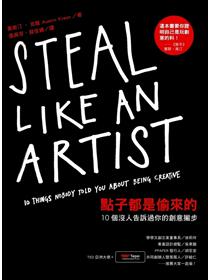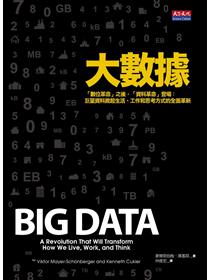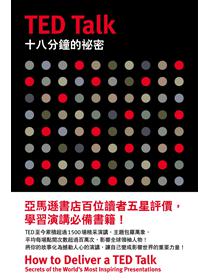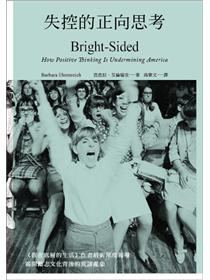章節試閱
第 3 章 共同創造 /策略大師C.K.普哈拉、哥倫比亞商學院教授博恩‧史密特
談到創新,浮現在腦海中的往往仍是這樣的場景:夜深人靜,一個孤獨的創意人仍在奮力追求靈感。創新如果只是這麼簡單就好了。現代的創新講究團隊。在這個領域,最有名的思想家首推普哈拉(C.K. Prahalad,1941-2010 年)。普哈拉是密西根大學羅斯商學院(Ross School of Business)保羅與魯絲‧麥克拉金(Paul and Ruth McCracken)講座特聘教授,專長為企業策略。他連續於 2007 與 2009 年蟬聯「50 大商業思想家」排行榜榜首,一直到他於 2010 年去世。
普哈拉是「核心競爭力」(core competence)一詞的創造人,他與哈默爾合寫的暢銷書《競爭大未來》(Competing for the Future),成為一代執行長訂定策略的必備指南。
普哈拉在 2004 年發表了兩本書:與凡卡‧雷馬斯瓦米(Venkat Ramaswamy)合著的《消費者王朝》(The Future of Competition),副標「與顧客共創價值」(Co-creating Unique Value with Customers),提出共同創造的概念;另一本是《金字塔底層大商機》(The Fortune at the Bottom of the Pyramid),它有一個非常有抱負的副標:「用獲利消除貧窮」(Eradicating Poverty Through Profits),書中強調世上窮國(位於「金字塔底層」的國家)代表的,是一個市值每年 13 兆美元、未經開發的市場。
普哈拉與雷馬斯瓦米在《消費者王朝》中強調:「我們正邁向一種價值創造的新形式。在這種形式中,價值不再是經由企業創造之後,再由企業與顧客進行交換。在這種形式中,價值由消費者與企業共同創造。」
普哈拉與雷馬斯瓦米認為,這是一項根本性的轉型,並且為這項大轉型提出以下解釋:「在過去,商業競爭很像傳統劇院:在舞台上,演員有很清楚的角色,顧客花錢買票,進了劇院坐下來,歡歡喜喜觀賞。在商界,公司、經銷商與供應商都了解各自在企業關係中扮演的角色,也都守著這些訂得清清楚楚的角色。但現在情況變了,商業競爭變得更像 1960 與 1970 年代的實驗劇場;無論是誰,每個人都可以成為一齣戲的一部分。」
普哈拉與雷馬斯瓦米說,公司與經銷商以及供應商之間的關係漸趨模糊,不同的群體開始共享更多資訊,開始合作進行創新。以沃爾瑪為例,沃爾瑪不再只是經銷寶鹼的產品,它開始與寶鹼分享每天的銷售資訊,兩家公司透過這類合作,可以保障倉儲管理無虞與貨源供應無缺。這是公司合作、共創價值的例子。
當然,企業在若干程度上,一直就是與它們的業務夥伴合作、進行創新的。但普哈拉與雷馬斯瓦米所說的這項大轉型,指的是與顧客共創價值的重要性。
價值共創,強化競爭力也救了人命
普哈拉與雷馬斯瓦米指出:「商界這波轉型,已經成為幾年來管理辯論的中心議題。經理人與學者談到公司『像一家人一樣競爭』,談到聯盟,談到網絡,談到公司間的合作。但就大體而言,經理人與學者忽略了消費者,而造成這項大轉型的最主要觸媒正是消費者。」
共同創造強調的,就是顧客在創新過程中不斷變化的角色。顧客(特別是在網際網路興起以後)開始積極參與新產品、新服務的創造過程,從而促成價值創造與創新的轉型。普哈拉與雷馬斯瓦米指出:「市場愈來愈像一個消費者扮演積極價值創造、價值競爭角色的論壇。這種新市場的一大特色是,消費者成了公司能力的一項重要新來源。顧客為公司帶來的這項新能力,是一種顧客的知識與技巧功能、顧客的學習與實驗意願,以及顧客從事積極對話的能力。」
普哈拉早先曾與哈默爾合作,為經理人帶來核心競爭力概念。他現在指出,與顧客共同創造與創新是新的競爭力要件。能掌握共同創造的公司,就能在創新與顧客滿意度領域取得競爭優勢。
就這類新競爭力的發展而言,有些產業比其他產業先進。舉例說,軟體產業早就放棄在實驗室實驗新產品的做法,改在顧客充分參與的環境中進行新產品實驗。例如,一系列微軟視窗(Microsoft Windows)作業系統在推出以前,都先經過數以百萬計顧客的 beta 測試。這些測試讓微軟得以發現早期軟體的許多毛病,對顧客忠誠度的維護也有加分效果。
還有一些科技公司,例如思科(Cisco)與幾家電腦遊戲開發商,甚至為顧客開放資訊、資源與系統,進一步與顧客共創價值。一些遊戲開發商為顧客提供製圖工具,讓顧客自行設計戰場,讓顧客客製虛擬人物的外觀等等,就是這類例證。
那麼,公司如何發展與顧客共創價值的競爭力?
普哈拉與雷馬斯瓦米認為,公司必須從 4 個方面著手:
‧ 鼓勵積極、明確、持續的對話。
‧ 動員顧客社群。
‧ 管理顧客的多樣性。
‧ 共同創造個人經驗。
像「魔獸世界」(World of Warcraft)製造者暴雪娛樂(Blizzard Entertainment)這類電腦遊戲公司,會不斷為顧客提供工具,讓顧客客製他們的人物與環境。例如,顧客可以依照自己的意願,選擇做一個妖怪(orc),做一個矮人(dwarf),做一個山精(troll),或從夜精靈(night elf)到血精靈(blood elf)中選一種扮演。
共同創造的類型非常多。而且這個理念已經遠遠超越軟體產業的範疇。普哈拉認為,特別是在醫療保健這類領域,消費者在為自己塑造、創造價值這方面扮演的角色愈來愈重要。他很有先見地指出:「出現在網際網路與其他地方的醫藥資訊,讓愈來愈多的病人可以與醫生對話。病人的知識愈豐富,他們為自己塑造養身保健之道的可能性也愈高。醫生或許會因為消費者僭越他或她的知識而不高興,但他們能學著與消費者合作,能做得很好。」
對於個人資料取用的愈加便利,普哈拉也頗有先見之明。他相信,身為顧客與病人的我們,很快就能與我們的醫療提供者共建一種個人健康檔案。他相信,以糖尿病患為例,不久以後,與一位醫生合作的糖尿病患,一旦血糖低到危險的程度,就會接到警告。這種共同創造的健康創新能拯救許多人命。
新時代的思考:N=1 與 R=G
在他 2008 年出版的最後一本書、與克利斯南(M.S. Krishnan)合著的《普哈拉的創新法則》(The New Age of Innovation)中,普哈拉將共同創造的觀念推向又一高峰,用兩個簡單原則說明一種新的競爭景觀。這兩個簡單原則分別是:N=1 與 R=G。
我們曾在幾個不同的場合訪問普哈拉,而普哈拉也每將這些互動視為一種共同創造的機會。在訪談結束時,他一定會轉身面對攝影記者,要他們談一談對這次訪談的感想。他們的感想對他很重要;他們的看法對他而言是一項學習機會:
你成長在印度,有 9 個兄弟姐妹。這些早期經驗為你帶來一些什麼教訓?
成長在印度,對管理學是一個非常好的預備教育。生長在大家庭,你得事事妥協;你得學會調適。而且就語言、宗教與收入水準而言,印度是一種非常多元的文化,所以你從小就必須在非常個人的層面上,開始學習應付多樣性。
第二點是我很幸運,因為我的父母親與學界淵源很深。我的父親是法官,也是一位很了不起的學者。他在我們很小的時候就告訴我們一件事。他說:「這世上只有一個東西,是你給的愈多,得的也愈多。這東西就是知識。」這句話對我影響很深。
之後我進入聯合碳化公司(Union Carbide),與工會一起工作。我那時是個年輕的產業工程師,負責訂定工資,與工會談判工資讓我學到很多東西。這些工會代表都是非常聰明的人,思考非常全面;你能保持公正與坦誠,就能以一種有趣的方式與他們打交道。這段經驗也讓我學會不要把這些團體視為敵人,要與他們合作,要坦誠,要公平。
You grew up in India as one of nine children. What did those early experiences teach you?
Growing up in India is an extraordinary preparation for management. You grow up in large families, so you always have to make compromises; you have to learn to accommodate. And India is a very diverse culture in terms of languages, religions, and income levels, so you start coping with diversity at a very personal level as a child.
The second point is that I was lucky because my parents were very academically oriented. My father was a judge and a great scholar. He told us very early in life, “There is only thing that when you give more, you have more-and that’s knowledge.” That has struck with me.
Then, in the Union Carbide plant, I had to work with communist unions. I had to set rates-I was a young industrial engineer-and negotiating rates with the unions taught me a lot. They were very smart people, they were very thoughtful; and if you were fair and honest, you could deal with them in an interesting way. So it taught me not to think of these groups as adversaries, but to collaborate, be honest, and be fair.
—
你在著作中暢談共同創造理念。你能解釋一下它的意義嗎?
共同創造是一項重要理念。它的內容就在於,我們需要兩個聯手解決問題的群體,而不是只靠單一群體解決問題。在傳統的工業時代,公司是一切的中心,但在進入新資訊時代以後,消費者有機會參與對話,有機會積極活躍,他們也因此可以塑造他們本身的個人經驗。換句話說,在共同創造的情況下,消費者可以為他們本身塑造個人經驗,公司也可以因此獲利。到今天,這種情況已經愈來愈普遍,可能性也愈來愈高。
Running through your work is the idea of co-creation. Can you explain what it means?
Co-creation is an important idea. What it says is that we need two joint problem solvers, not a single problem solver. In the traditional industrial system, the firm was the center of the universe, but when you move to the new information age, consumers have the opportunity to engage in a dialogue and be active, and therefore, they can shape their own personal experiences. So, with co-creation, consumers can personalize their own experiences and the firm can benefit. And this is becoming much more common and possible today.
—
可以舉個例子嗎?
我們以谷歌(Google)為例;現在每個人都 Google 了。但如果我看著谷歌,它並沒有告訴我怎麼使用這個系統。我可以個人化自己的網頁;我可以建立 iGoogle 。我決定我要的是什麼。谷歌是一種經驗平台。谷歌了解,它或許有一億個消費者,但每一個消費者都可以利用這個平台,做他或她想做的事。這是一種個人化的、共同創造價值的極端案例。我們用一個簡單的等式來代表:「N=1」。
就一方面而言,谷歌什麼內容也不生產。內容來自世界各地大量人群,包括機構與個人。谷歌把所有這些內容整合在一起,供消費者應用。這就是共同創造的精神。它的意義就在於,就算你有一億個消費者,每個消費者的經驗各不相同,因為這經驗是由這個消費者與組織(在這個案例中,就是谷歌)共同創造的。所以說,資源並不藏在公司內部,它來自四面八方、各式各樣的機構;也因此,資源(resource)就是全球(global)。我們用一個簡單的等式來代表:「R=G」,因為今天的資源不只來個一個機構。
我們因此說,N=1 與 R=G 將成為今後的型態。
What would be an example of that?
Let’s take Google; everybody Googles now. But if I look at Google, it does not tell me how to use the system. I can personalize my own page; I can create iGoogle. I decide what I want. Google is an experience platform. Google understands that it may have a hundred million consumers, but each one can do what he or she wants with its platform. That is an extreme case of personalized, co-created value. Our shorthand for that is “N=1.”
On the other hand, Google does not produce the content at all. The content comes from a large number of people around the world-institutions and individuals. Google aggregates it and makes it available to me. That is the spirit of co-creation, which says that even if you have a hundred million consumers, each consumer experience is different because it is co-created by that consumer and the organization, in this case Google. So resources are not contained within the firm, but accessed from a wide variety of institutions; therefore, resources are global. Our shorthand for that is “R=G,” because resources are now coming from more than one institution.
So, N=1 and R=G are going to be the pattern for the future.
—
怎麼將這兩項原則應用到一個組織?例如一個大型醫療組織?
如果你觀察發生在一家醫院,或發生在像我這樣想保持健康的個人身上的事,你會發現每個人的情況都不一樣。我們每個人都有屬於自己的一套健康史與病歷,我個人有我個人的資料。治療我的醫生一定會把我拉到一邊,與我討論使用某一套養生術可能帶來的風險與好處。
How do these two principles apply to an organization, perhaps a large healthcare organization?
If you take what happens in a hospital, or what happens to me personally as someone who wants to maintain good health, each one of us is unique. We each have our own history of good health and health problems, so there are data about me personally. There is nothing that stops the doctors who treat me from taking me aside and discussing the risks and the benefits of following a certain regimen.
—
能不能舉個例子?
疾病導致醫療體系成本的增加。想降低這個成本,就必須解決疾病的問題,N=1 的做法就能派上用場。這是因為我們每個人都不一樣,每個人的基因與生活方式不同,染病傾向也各不相同。所以想解決疾病的問題,就必須做到這 N=1 的層面。
舉例說,如果有人身材略嫌肥胖,醫生可以向他們提出警告,要他們提防二型糖尿病,要他們注意心血管疾病與高血壓議題。我們今天已經可以做到這些事。
比方說,我的醫生與我可以觀察我的用藥紀錄與病歷,討論一套幫我保持健康的養生之道,一套共同創造的養生之道。醫生不能要我每天走 4 哩,因為如果我住的地區治安情況很差,這麼做很不明智。另一方面,醫生可以安排我每天上健身房運動。我可以遵行這套養生術保持健康,醫生可以追蹤我的健康狀況。
Could you give me an example of that?
Episodes of illness increase the cost of the healthcare system. So if you want to reduce the cost, you have to focus on wellness, and wellness requires the N=1 approach. That’s because we’re all different and we all have different propensities for disease-genetic and also lifestyle. So you have to get to that level.
For example, if people are a little bit obese, the doctor might alert them to the fact that they are susceptible to type 2 diabetes, that cardiovascular disease and high blood pressure are issues that they have to worry about. They can do that today.
So, for example, my doctor and I could look at my medical records and my episodes of illness and discuss a regimen to keep me healthy. That is a co-created regimen. The doctor cannot tell me to walk four miles every day because if I’m living near a rundown area, that may not be very wise. On the other hand, the doctor can make an arrangement for me to go to a gym so that I can exercise. Thus, if I follow this regimen and the doctor keeps track of me.
—
你怎麼把它進一步運用?
這麼說吧。假定我來到下一階段;假定我患有心臟病,帶了一個心律器。醫生會對我說,你的心律器必須在這個頻寬內運作,如果你許可,我們會對你進行遠方監控。一旦出現狀況,我們會透過手機,透過個人電腦,透過一般電話,或派人給你送信,要你立刻上醫院接受治療,或要你休息兩天。這位醫生於是成了我的友人。
How could you take that further?
Well, let us assume that I go to the next step; let us assume that I am a heart patient and I have a pacemaker. The doctor can say, all right, this is the bandwidth within which your pacemaker must operate, and, with your permission, we’ll remotely monitor you. If something goes wrong, we’ll send you a message, through a cell phone, through a PC, through the regular phone, or by sending somebody, telling you to get to the hospital because we need to treat you, or telling you to rest for two days. So the doctor can become my personal friend.
—
這是 N=1 這一部分。R=G 這部分是怎麼回事?怎麼將這個等式運用到醫療服務?
健康對我們每個人都太重要了,我們必須有一種 N=1 的思考方式才行。我們不能再像過去一樣,把病人當成裝配線來治療。但 R=G 這部分更加有趣。它說,醫院可以創造一種生態系統,在這種系統裡,它不必什麼事都做。
舉例說,社工可能上門找我談話,可能找上孕婦,討論怎麼做才能生下健康寶寶。醫院可以與一家救護車服務業者、與一位營養師建立關係,可以有各式各樣關係。例如,它可以與一家化驗實驗室建立關係,讓二型糖尿病患者不用上醫院,直接去實驗室。如果我是這位病患,我可以不必到醫院、排著長隊等候就診。
So that’s the N=1 part. What about R=G? How does that apply to a healthcare service?
Health is so important to all of us that it is critical that we get into an N=1 way of thinking. We cannot continue to treat patients like they’re an assembly line. But the R=G is more interesting. It says that the hospital can create an ecosystem where it doesn’t do everything.
For example, I may have a social worker come and talk to me, or talk to women who are pregnant on what they should do to have a healthy baby. The hospital could have a relationship with an ambulance service, a relationship with a dietician, all kinds of relationships. For example, with type 2 diabetes, you can have testing labs that are not necessarily in the hospital. So as the patient I don’t have to go and stand in a big queue.
—
這麼說,醫院是一個更廣的生態體系的一部分?
是的。醫院可以與各式各樣低成本醫療服務供應業者建立關係,形成一個完整的生態體系。醫院成為這個體系的關鍵機構,訂定醫療標準,訂定健康安全與隱私問題處理標準,讓所有參與體系的人都獲得應有酬勞等等。換言之,整個醫療構想就是要從過去的治療病患,走向幫助人健康,創造健康。如果從這個角度思考,N=1 與 R=G 不但變得非常可能,事實上還是我們必經之途。
So the hospital is part of a wider ecosystem?
Yes. The hospital can build a whole ecosystem of low-cost suppliers connected to the hospital, where the hospital becomes the nodal institution that sets the standards, that sets the parameters on how health security and privacy will be dealt with, and that also provides the system through which everybody gets paid for doing this. So the whole idea in healthcare is to help move away from treating illness to treating wellness and creating wellness. If you start from that perspective, then N=1 and R=G become eminently possible-in fact, required.
—
這些有關創新的新思考方式,對我們的領導方式有什麼意義?它們怎麼改變領導?
我認為這其間有 3 個非常重要的特點。首先,領導者的工作就是帶領大家。若你沒有未來願景就無法領導。領導和未來岌岌相關,它的重心在於對未來的觀點,在於希望。
What do these new ways of thinking about innovation mean for the way we lead? How do they change leadership?
I would say that there are three very important distinctions. First, leaders must lead. You cannot lead unless you’re future-oriented. Leadership is about the future, it is about a point of view about that future, and it is about hope.
—
這是第一個特點。還為領導人帶來什麼改變?
第二個有關領導的要點是,它的重心不在於領導人。我喜歡把領導人比喻為牧羊犬,不是牧羊人。牧羊犬必須遵守一些規則。規則第一條,你永遠得從後方領導。第二條,你可以叫個不停,但你不能咬。第三條是,你不能讓一隻羊走失!
換句話說,領導人是那種可以幫你發揮到極致的人,不是幫他或她自己發揮所長的人。這是一種非常不一樣的觀點。甘地(Gandhi)就是這樣領導的。如果你真真正正想一想他這個人,觀察他,看他的外貌,看他的衣著,沒有人會說像他這樣的人能為人類史帶來什麼重大影響。但他是一位偉大的創新者─他的領導講究的是改變;講究的是希望;講究的是自由;它是一種非常個人的東西。甘地讓每一個印度人為印度獨立大業貢獻他或她一己之力。而且,非常重要的是,他訂了一些不容討價還價的準則。印度爭取獨立的運動不是武裝鬥爭,是一項和平抗爭,這一點不容妥協。而這也是我提出的第三個原則:有些事不容妥協。唯有明訂一些不容妥協的原則,才能有道德權威。想做到這一點,需要勇氣。
所以對我來說,領導是一種觀點,是一種讓他人發揮所長、並且堅持道德走向的能力。它不是技術能力,不是經濟實力;它主要是一種道德力。
So that’s the first point. And the other changes for leaders?
The second point about leadership is that it’s not about the leader. The metaphor I like to use is that of a sheepdog, not a shepherd. A sheepdog has to respect some rules. Number one, you always lead from behind. Number two, you can bark a lot, but you don’t bite. And, number three, you don’t lose any sheep!
So, in other words, a leader is somebody who can bring out the best in you, not the best in him- or herself. That is a very different view. It’s what Gandhi did. If you really think about Gandhi, looking at him, looking at his physical stature, looking at his clothes, nobody would have said that he would make a fundamental imprint on human history. But he was a great innovator-his leadership was about change; it was about hope; it was about freedom; it was a very personal thing. He made every Indian realize his or her own personal ability to contribute to that effort. And, very important, he set some nonnegotiables. It was not an armed struggle, it was a peaceful struggle and that was nonnegotiable. So that would be my third principle: some things are nonnegotiable. Moral authority comes from having clear nonnegotiables. And that takes courage.
So for me, leadership is a point of view, the ability to mobilize people and make them achieve their very best and to have moral direction. It’s not technological capability and economic strength; it’s morality as well.
—
重視顧客經驗,推動創新的另一要件
共同創造有兩個過去一直遭到忽視的來源:顧客與員工。就員工這方面而言,現在有關加強員工參與,讓員工發揮創意、貢獻聰明才智的聲音,已經愈來愈響。在顧客這方面,公司也愈來愈強調顧客經驗的重要性,將顧客經驗視為一種與顧客一起創新的手段。
哥倫比亞商學院羅伯‧卡爾金斯(Robert D. Calkins)講座國際企業教授博恩‧史密特(Bernd Schmitt),是主張公司應該進一步了解顧客,以推動創新的重量級人士之一,他於 2007 年出版《大想法策略:引爆革命性商機的致勝法則》(Big Think Strategy: How to Leverage Bold Ideas and Leave Small Thinking Behind)一書。我們在與史密特訪談時,首先提出的就是顧客經驗問題。
過去 10 年來,顧客經驗有些什麼變化?
它改善了。零售做法已經與 10 年前完全不一樣了。以 Abercrombie & Fitch 這類休閒服飾為例,它在零售空間的自我行銷方式已經全然不同。但顧客經驗的改變不僅止於零售而已,它同時也涉及通信,也涉及網站。所以說,顧客經驗現在是個熱門議題,許多公司都在努力投入。許多公司另設管理職位,專責為顧客創造經驗。
How has the customer experience changed over the last decade?
It has improved. Retailing is entirely different from 10 years ago. Take a casual clothing line such as Abercrombie & Fitch-the way it markets itself now in the retail space is entirely different. But it’s not only about retailing. It’s also about communications. It’s about websites. So, the customer experience is a hot topic, and lots of companies are working on it. They’re creating management positions within their organizations to create experiences for customers.
—
顧客經驗只有一種,還是說它會隨國家與文化不同而不同?
毫無疑問,顧客經驗有文化上的差異。在美國管用的一種經驗,未必在歐洲或亞洲管用。所以說,你必須對顧客的時尚、對他們的需求、生活方式等等一切種種非常敏感才行。對顧客經驗管理而言,這是件令人振奮的事:你永遠不敢誇口說:「我們現在已經將這個經驗做好了,這經驗就是這樣。」你永遠必須不斷加以更新,加以升級。
我住在紐約,關注顧客經驗自然順理成章,因為生活周遭充滿各種有趣的經驗,無論就日常生活或就商業角度而言都是如此。舉例說,在觀察零售環境時,在接觸到廣告公司與通信業者以後,你難免會想,廣告行銷的重點不僅是談理性而已,不僅得強調產品特性與規格而已,與顧客接觸的手法還必須有創意、必須與眾不同才行。紐約是一個非常好的、研究顧客經驗的實驗室,但它只是一個實驗室。我經常旅行的原因就在這裡。身為城市人的我,喜歡比較公司在世界不同的角落怎麼自我行銷。世上有許多不同的產業、公司與國家,所以毫無疑問,世上也有各式各樣的顧客經驗。
中國在顧客經驗上真的改善了許多。以上海磁浮高速火車為例,它大體上是德國西門子(Siemens)的產品,但在慕尼黑,在德國,磁浮車一直沒能成為事實,上海卻實現了這個夢!不到 10 分鐘就能到上海是個了不起的經驗。在身為顧客應該有什麼樣的感受這個議題上,中國還有其他許多地方也做得很好。最近我去了一趟中國,剛剛通過海關,就有一個閃著光的評分板,要我對剛才檢查我證件的那位海關官員打分數。這是世界級的海關服務。就顧客經驗管理而言,中國做得非常有聲有色。
Is there one customer experience, or does it change with countries and cultures?
There’s no doubt that there are cultural differences. An experience that might work in the United States may not work in Europe or Asia. So, you have to be very sensitive to customer trends, their needs and lifestyles, all of that. That’s the exciting thing about customer experience management: you can never say, “We’ve fixed the experience now; this is how it is.” You always need to update it;you always need to upgrade it.
Living in New York, I think it is natural to focus on the customer experience, because there are lots of interesting experiences around one, both in people’s daily life and also commercially. When you look at the retail environment, for example, when you have contacts with the advertising agencies and the communications businesses, you can’t help but think that marketing is not only about rational things and stressing product characteristics and product specifications, but also about having to be creative and unusual in the approach that you’re using with your customers. New York is a great laboratory for studying what’s going on with customers, but it’s only one laboratory. That’s why I travel a lot. Being a city person, I like to compare how companies market themselves in different parts of the world. There are many different industries, companies, and countries; so, without a doubt, there are many different kinds of customer experiences.
China is really improving a lot of customer experiences. Think about the Maglev, the high-speed train in Shanghai. It’s mostly a Siemens product, but in Munich, in Germany, they never put it on the tracks. In Shanghai, they have done it! It’s a great experience to be in the city within 10 minutes, and there are many other ways in which China is helping to improve what it feels like to be a customer. Recently, when I went to China, right after I went through customs, an illuminated rating scale asked me to rate the officer in terms of how satisfied I was with the experience. That is world-class customs service. So, there are lots of interesting things going on in China with respect to experience in management.
—
如果說顧客經驗在過去 10 年改善了,今後 10 年它會朝哪裡發展?
依我看,顧客經驗會在幾方面出現改變。首先,顧客非常在意是不是綠化、是不是購買綠色產品,以及公司是不是真正關心綠化這類問題。我們會見到一些想贏得消費者青睞的公司,在這方面進行許多改變。我也相信,顧客會希望與公司建立更自然、更豐富的聯繫,甚至是情感上的聯繫,而這是一項重大改變。顧客不想與他們一無所知、可能為非做歹的大財團打交道。所以我認為,公司與消費者之間的交易會出現更加多得多的互動與開放。
If the customer experience has improved in the last decade, where’s it going next?
I think the customer experience will change in several ways. First of all, customers are very concerned about going green and buying green products, and about companies being serious about being green. So, we will be seeing a lot of changes in this regard from companies that are trying to win the hearts of consumers. I also believe (and this is a major change) that customers will want to be more casual and more connected-even emotionally connected-with companies. They don’t want to do business with big, anonymous conglomerates that they don’t know anything about and that may be behaving in unethical ways. So, I think we’ll see a lot of more interactivity and openness in the transactions between companies and consumers.
—
所以說,顧客對公司的期望會變得更高。
沒錯,而這是顧客經驗管理面對的一項挑戰。期望一旦增高,公司必須滿足這些新期望,這就需要新的管理風格。經理人需要不斷與顧客保持接觸,需要了解顧客的期望,並針對這些期望做出反應。不過這些工作能讓公司變得更好。
So customers will come to expect more from companies.
That’s right, and that is a challenge for experience management. When expectations increase, companies have to live up to the new expectations, and that requires a new management style. Management needs to be constantly in touch with customers, understanding what they expect and responding accordingly. But this is something that will make companies better.
—
聽起來,這些東西很難在課堂上講得清楚,是不是?
我有時會把顧客帶進教室。這是最重要的事。公司也應該這麼做,也應該把顧客帶進組織。此外,我在教學生的時候,會教許多以顧客見解為重心的新技術與新研究方法,例如不在實驗室(因為實驗室是一種人為環境)、而在商店裡進行焦點團體(focus group,一種顧客調查方法)測試的新方法。我們會在班上討論許多研究技術,還會操作這些技術。有時我也會帶學生進行實地考察。我們走訪紐約市零售商店,觀察發生在店裡的事,在自然環境中觀察顧客(我認為公司也應該這麼做)。我認為,這些都是了解顧客、了解顧客經驗的好方法。想了解顧客,課堂是個非常好的出發點。
This all sounds like something that would be hard to teach in a classroom. Is it?
I sometimes bring customers into the classroom. That’s number one. Companies should be doing the same thing; they should bring customers into their organizations. Also, I teach my students a lot of the new technologies and the new research methods that are focused on customer insight-for example, methods that involve running focus groups not in a laboratory, which is an artificial environment, but in stores. So, we talk about research techniques in my class, and we practice them. And I sometimes take students into the field. We do a retail tour in New York City and watch what’s going on-observing customers in their natural environments (something that I think companies should also be doing). I think these are great techniques for understanding customers and for understanding the customer experience. The classroom is a great starting point for learning about customers.
—
有些公司對待顧客很不好。你知不知道這些公司為什麼會沉淪到這種地步?
我認為,許多公司在顧客經驗方面一直做不好,就因為他們仍然非常官僚。有時他們害怕與顧客互動,有時他們發現顧客不喜歡他們提供的待遇。我認為主要原因就在這裡:不敢面對顧客。細想一想。顧客有時可能變得非常嚇人,因為他們會有很多要求需索。而且你很可能也不想知道這一切。只是躲在自己的組織裡,不出去面對顧客,會為你帶來更多「一切盡在掌控中」的感覺。
無論對任何一家公司,顧客經驗都應是公司策略的一項要件,所以疏忽顧客是一種短視。我的工作一直以創意、以做新的事為主題。顧客經驗是針對顧客的一種創新。就更廣義的層面而言,我寫的那本《大想法策略》談的就是怎麼創新,怎麼在組織裡訂定一種創新、有創意的策略。我的這本書為經理人帶來一些工具,教他們怎麼找出一些大膽的構想,怎麼將它們轉換為策略,怎麼推動那些策略。
Some companies treat customers poorly. Do you have a sense of why they allow themselves to lag this area?
I think what’s holding them back is that many companies are still very bureaucratic. Sometimes they are afraid to interact with customers and perhaps discover that customers don’t like the way they have been treated. I think that’s the major reason: fear of the customer. Think about it. Customers can be very frightening because they can be very demanding. And you may not want to know about it. You think you have much more control if you are just staying inside the organization.
The customer experience is a major factor in any company’s strategy, so, ignoring customers is shortsighted. All my work has been about creativity and doing new things. Customer experience is about innovation with respect to the customer. My book Big Think Strategy is, more broadly, about how to be innovative, how to develop an innovative, creative strategy within the organization. In the book, I give managers tools on how they can source bold ideas, turn them into a strategy, and launch that strategy.
—
如果經理人不僅短視,而且還固執,又該怎麼辦?
我記得有一次在香港上一家髮廊。理髮師傅問我,頭髮怎麼分,我對他說「左分」。他又問我,我這麼做已經多久了。我說:「我也記不得了,大概總有 40、45 年了吧。」他於是說道:「今後 40 年,你不會再左分了。」這話對我來說是很大的啟發。他當時的作為,就某種方式而言,像是宰殺一頭聖牛一樣:幾十年來,我一直把頭髮左分,從沒考慮過其他的方式。公司裡面也有很多這樣的聖牛,也有很多行之多年、一成不變的行事規矩。這些公司也相信,做這些事情就必須這麼做。每個人都有某些從來不加質疑的假定,經理人也一樣。公司如果能將這些聖牛找出來,製作一份清單,然後提出另一套做法,一定能讓公司上下見識大開。一旦這麼做,許多經理人會發現,許多年來,他們在許多事情上採取的一成不變的做法,其實沒什麼道理。
What if managers are not just shortsighted, but stuck?
I remember going to a hairdresser in Hong Kong, and he asked me where I part my hair. I told him, “On the left.” Then he asked how long I had been doing that. I said, “I don’t know-40 or 45 years.” And then he said, “You won’t for the next 40.” This was a great inspiration for me. What he was doing at that moment was, in a way, killing a sacred cow: that I had parted my hair on the left and never thought of doing it any other way. And in companies you have lots of these sacred cows, things that they have always done in a certain way. And they therefore believe that these things must be done that way. Everyone makes certain assumptions that are never questioned-managers, too. It can be very enlightening for a company to make a list of those sacred cows and then come up with alternatives to the ways that things are done. In such a process, many managers come to realize that there are often no good reasons for doing a lot of things the way they have always been done.
—
你曾經針對經理人進行這種練習嗎?
在我與組織舉辦的研討會中,經理人可以輕輕鬆鬆在清單上列出 20、30 個聖牛,這些聖牛有的涉及營運,有的涉及行銷與新產品上市,不一而足。他們在提出清單以後,要訂定管理這些重要工作的另類途徑。這些另類構想未必都比現行做法強。它們必須經過評估等等過程。但想找出大膽的構想,這是一條途徑。這類練習一般都能為公司帶來許多可以付諸實施的新構想,效果很理想。
Have you tried this exercise with managers?
When I do workshops with organizations, managers can easily come up with a list of 20 or 30 sacred cows involving how with the company deals with operations, marketing, and new product launches. They come up with these sacred cows, and then they develop alternative ways of managing such important tasks. Not all of those alternatives will be a great improvement on the way things are done at present. The alternative ideas have to go through an evaluation process, and so on, but this is one way of sourcing bold ideas. The exercise usually pays off with many new ideas that can be implemented.
—
公司在結構上適合進行大膽思考嗎?
大多數公司極端保守,它們非常官僚。它們的組織方式一般而言各擁山頭,彼此不相通話。你如果採取大想法策略,就必須拆除這些山頭,打破這些壁壘。你還需要擁有從外界引進大膽構想、跨出產業外找構想的程序與工具。我在研討會中經常使用的一種做法是,要經理人進行產業外評估。許多公司會進行產業內評估(例如航空公司會評估其他的航空公司),但公司還需要注意其他產業,從其他產業的佼佼者身上尋找構想,尋找做法。
Are companies structured to think big?
Most companies are extremely conservative. They are also very bureaucratic. They are usually organized in silos that don’t talk to one another. When you do a big think strategy, you need to break through that; you need to break down the silos. And you need to have procedures and tools on how to source bold ideas, such as looking outside the business. A technique that I use a lot in my workshops is to ask managers to perform outside-industry benchmarking. Many companies benchmark within their industry-airlines look at other airlines-but they also need to get ideas from the best performers in other industries and what they’re doing.
—
而這一切都需要大膽的領導,不是嗎?
這些天來,我對領導這個議題非常有興趣。過去人們總有一種觀念,認為領導是一種分析能力,是一種面對現況、找出最佳決策選項的能力。但這種能力其實只是領導的一部分。另一部分是觀察未來,是創意,是開創新世界。想達到這些目的,公司需要不同的領導技巧。
All of this requires bold leadership, does it not?
I’m very interested in leadership these days. The notion of leadership as something analytical-about decision making in a status quo situation in which one chooses the best possible option-is only one particular part of leadership. Another part of leadership is to look into the future, to be creative, to create new worlds. For that, companies need different leadership skills.
—
你能幫他們學習新領導技巧嗎?
與我共事的公司所以聘用我,為的就是要我協助他們成長,協助他們用新的方式觀察世界,協助他們想像新的現實。大多數企業都有一支領導團隊,在這個團隊中,總會有一些保守、迷信現況的經理人,也會有一些真的很想改革現狀的經理人。當然,如果一家企業處在一個朝氣蓬勃的產業,這家公司必須跳出既有營運與策略框架進行思考,捨此而外別無其他途徑。無論怎麼說,建立大想法策略對公司總是好處多多。
Can you help them learn new leadership skills?
The companies I work with hire me to help them to grow, to see the world in new ways, to imagine new realities. Most businesses have a leadership team with some conservative, status quo-oriented managers working along with those who really want to revamp their business. Of course, if the business is in a dynamic industry, then the company has no choice but to think outside its current operational and strategic box. Either way, developing a big think strategy can be helpful.
—
第 3 章 共同創造 /策略大師C.K.普哈拉、哥倫比亞商學院教授博恩‧史密特
談到創新,浮現在腦海中的往往仍是這樣的場景:夜深人靜,一個孤獨的創意人仍在奮力追求靈感。創新如果只是這麼簡單就好了。現代的創新講究團隊。在這個領域,最有名的思想家首推普哈拉(C.K. Prahalad,1941-2010 年)。普哈拉是密西根大學羅斯商學院(Ross School of Business)保羅與魯絲‧麥克拉金(Paul and Ruth McCracken)講座特聘教授,專長為企業策略。他連續於 2007 與 2009 年蟬聯「50 大商業思想家」排行榜榜首,一直到他於 2010 年去世。
普哈拉是...
 4收藏
4收藏

 3二手徵求有驚喜
3二手徵求有驚喜





 4收藏
4收藏

 3二手徵求有驚喜
3二手徵求有驚喜




































